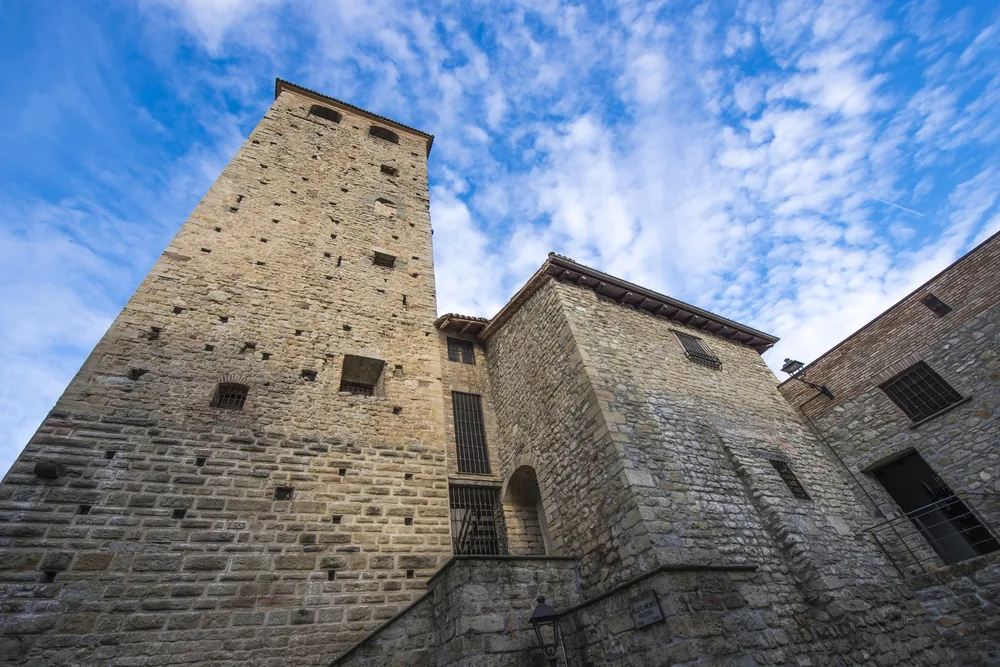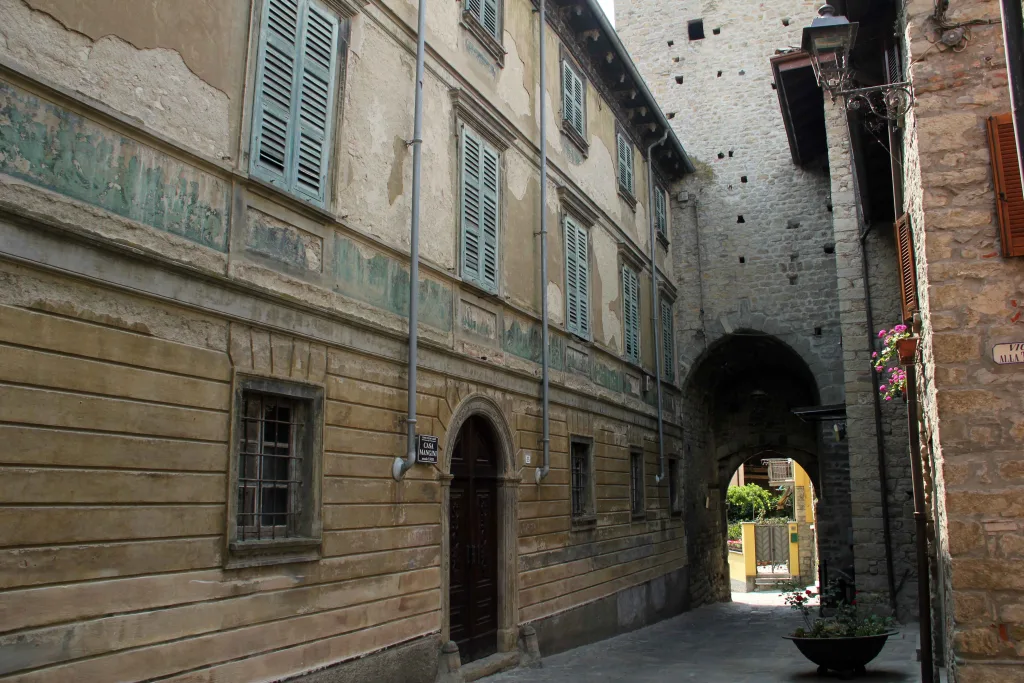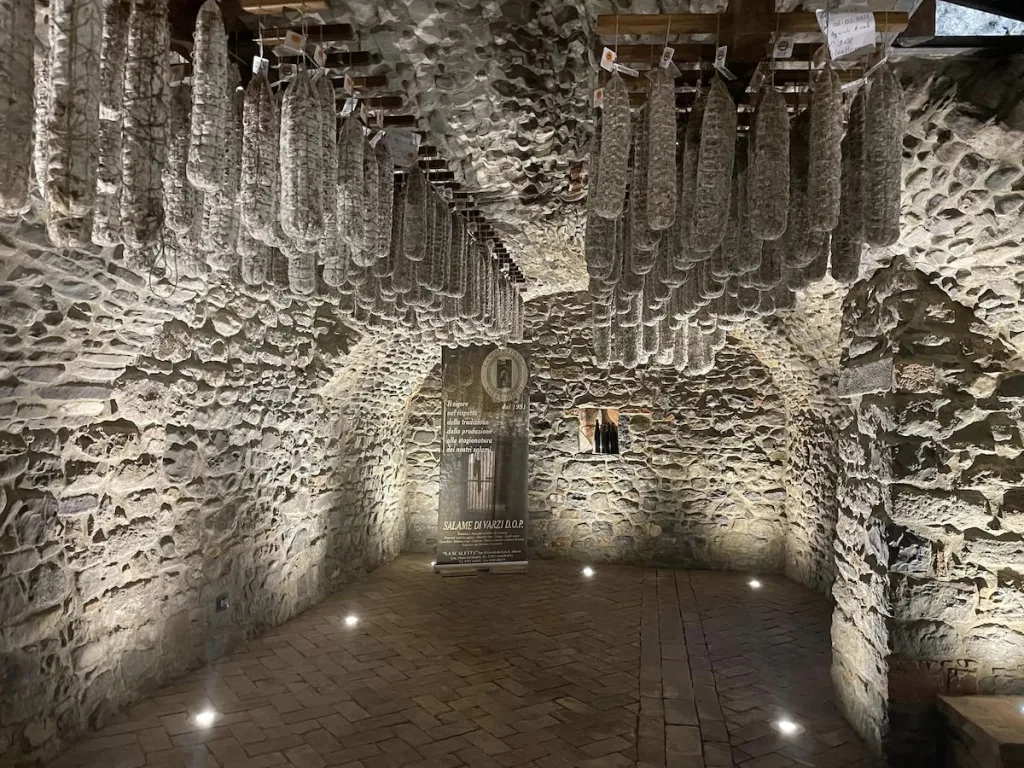Varzi boasts two important recognitions: being part of the circuit the most beautiful villages in Italy and being elevated to city status by decree of the President of the Republic, achieving a record: being the smallest city in Lombardy.

A thousand-year-old enchantment
Capital of the Oltrepò Pavese Montano and largest town in the Staffora Valley, Varzi boasts a millennial history still palpable in the silence of its alleys. With its medieval buildings, low arcades and small shops, it is a place with a dual soul: that of history, in the inner area, and the more lively one, made up of open-air tables, markets and fairs in the lively piazza overlooking the Staffora stream, the beating heart of the town.
The narrow alleys, medieval buildings and low arcades make Varzi a small living museum of history. But Varzi is also a place of energy, cultural vitality. With the wisdom of knowing how to embrace tradition and modernity.

On the trade routes
In the Middle Ages, Varzi played a fundamental role in trade between the Po Valley and the Ligurian Sea. As a fief of the powerful Malaspina marquises, the town experienced a phase of great economic prosperity. As early as the 12th century, the mule tracks and cart tracks that connected the coastal towns to the Apennines were traversed by caravans laden with salt, a very precious commodity subject to heavy duties.

The Via del Sale was a real commercial artery and Varzi, strategically positioned along this route, became an important point of passage and exchange.
All that remains of the ancient walls are the two gates: the Soprana, also known as the "Clock Tower" because a belfry with a clock was built on it at the end of the 18th century, and the Sottana, also known as the Mangini Tower.
Strolling through the historic heart of Varzi, one comes across Via del Mercato, Via della Maiolica, and Vicolo dietro le Mura, amidst small craft shops and places selling typical products. The path through the wonders of Varzi passes by the Oratorio dei Rossi (Oratory of the Reds) and the Oratorio dei Bianchi (Oratory of the Whites), with its cloverleaf-shaped interior, like the great cathedrals. And, then, Palazzo Odetti (today the town hall), the Malaspina Castle and the Tower, which in name would be Malaspina but since - it was the time of the Inquisition - women accused of witchcraft were imprisoned there and then burned at the stake, it has taken the name Torre delle Streghe (Witch Tower).
In the lower part of Varzi is the unmissable Capuchin church, dedicated to San Germano, the patron saint of Varzi, while in the hamlet of Cella is the Temple of Fraternity, with wartime memorabilia.

Land of itineraries and sports
Varzi is an excellent starting point for excursions in the area, such as the nature trail that leads to the Partisan's House, the Via del Sale, a ninety-kilometre route to the sea, and the Varzi-Voghera Green Way, on the old railway track. But it is also the place for a sports holiday thanks to the football, five-a-side football, basketball and tennis facilities and the swimming pool open in the summer season.
Local specialities
It is impossible to leave the village without tasting the unique and traditional flavours that characterise the local cuisine. A gastronomic treasure is the world-famous Salame di Varzi DOP. Another dish not to be missed by visitors to the town is ravioli di brasato, a true culinary masterpiece. To finish on a sweet note, here is another authentic expression of local tradition: the almond cake. Unique in its kind, it is made according to a recipe jealously guarded by families of pastry chefs.









